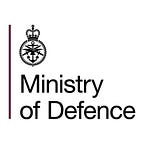The silent service: The UK’s Nuclear Deterrent
Unseen and unhindered, the silent Submarine Service gives the Royal Navy strength beneath the waves providing continuous nuclear deterrence 365 days a year
This vital mission has seen at least one of the UK’s nuclear-armed ballistic missile submarines patrolling the seas undetected every minute of every day, for over 50 years.
They deter the most extreme threats to our national security and way of life, helping to guarantee our safety and that of our NATO allies.
The Royal Navy’s submarine fleet is hidden. But it can see and hear everything. These powerful boats can silently detect aircraft, ships and submarines. They also safely maintain Trident, the nation’s strategic nuclear deterrent.
Why do we need nuclear deterrence?
Although the risk of nuclear conflict is very low, the threats the UK faces are growing.
Some states, such as Russia and China, are significantly increasing and diversifying their nuclear capabilities.
The UK must maintain the ability to protect itself, and ensure these weapons can never be used to threaten, or attack, us or our NATO allies.
The UK and our allies, on the other hand, have reduced and maintained relatively modest arsenals since the early 1990s and the end of the Cold War.
Why does this matter to you?
Although it may sometimes feel that these threats are far removed from our daily lives, the UK’s nuclear deterrent plays a key role in keeping the public safe.
A minimum, credible, independent nuclear deterrent, declared to the defence of NATO, is essential to our security and that of our NATO allies. The purpose of our independent nuclear deterrent is to preserve peace, prevent oppression, and deter aggression. Potential aggressors know that the costs of attacking the UK, or our NATO allies, could far outweigh any benefit they could hope to achieve.
By providing a credible and effective response option to extreme aggression, our nuclear deterrent reduces the likelihood of such an attack ever taking place.
What is the role of the Submarine service?
This vital mission is only made possible by the truly extraordinary people from the Royal Navy Submarine Service who crew and run the patrols.
In operating submarines for over a century, the Royal Navy has always been at the forefront of underwater warfare.
Submarines combine qualities of stealth, endurance and flexibility, characteristics which give them unparalleled freedom to operate worldwide in support of national and coalition operations.
Maintaining our nuclear deterrent requires submarines to remain underwater for months at a time. Carrying all the food they need and with the ability to create their own fresh water and clean air, allowing them to remain undetected and out of sight. While their crews can receive short messages from loved ones, there is no way for them to respond.
What are the current nuclear submarines?
Since April 1969, the Royal Navy has upheld a patrol mission of Continuous At Sea Deterrence. This is the most capable, resilient and cost-effective platform on which to deploy our nuclear deterrent.
The codename given to the UK’s Continuous At Sea Deterrence is Operation Relentless.
Currently, four Vanguard-class submarines form the UK’s strategic nuclear deterrent force.
Each boat is armed with Trident 2 D5 nuclear missiles. Like all submarines the Vanguard Class are steam-powered, their reactors converting water into high-pressure steam to drive the submarine’s engines and generate electricity.
Although often referred to as the eyes and ears of the Navy’s fleet, submarines can’t actually see underwater — technically. Light does not penetrate far enough through the water, so submarines navigate virtually blind. What they can do is use sonar to convert sound into an image, this is known as the sonar trace. This sonar system is so sensitive it can hear (and ‘see’) vessels over 50 miles away.
What is the Trident 2 D5 nuclear missile?
The Trident nuclear missile is Britain’s ultimate deterrent and weapon.
The Trident can be fired at targets up to 4,000 miles away, ejected by high-pressure gas before the rockets fire when the missile reaches the surface. At its fastest, it will travel at over 13,000 miles an hour.
Submarines on patrol carry a number of operational missiles each armed with multiple warheads.
What is the future of our nuclear Submarines?
Our nuclear deterrent will remain an important part of the UK’s national security strategy for as long as the global security situation makes it necessary. Work is underway to replace the current Vanguard submarines with four new state of the art Dreadnought ones.
Designed and built in the UK, these new submarines will be some of the most advanced machines ever built. In fact, they are as complex as a spacecraft.
At a glance, the new Dreadnought class submarines;
- Crew: 130
- Displacement: 17,200 tonnes
- Length: 152.9 metres
- Expected lifespan: 30 years
This highly specialised work directly supports tens of thousands of jobs right across the UK and many more businesses benefit besides. In fact, the deterrent’s base on the west coast of Scotland at HMNB Clyde is one of the largest employment sites in the country.
As part of the renewal programme, the UK will also replace its nuclear warhead.
A world without nuclear weapons
The UK is committed to the long-term goal of a world without nuclear weapons.
We maintain only the minimum amount of destructive power needed to guarantee our deterrent remains credible and effective, and are the only nuclear weapons state to have reduced to a single delivery system.
The UK is at the forefront of pursuing the steps needed to bring about disarmament, however, abandoning our deterrent unilaterally would not lead others to do the same.
Instead, it would undermine our security and that of our NATO allies. A world where the UK’s potential adversaries have nuclear weapons and the UK (and NATO) does not, is not a world in which we are safer.
You can find out more information about the UK’s nuclear deterrent here.
